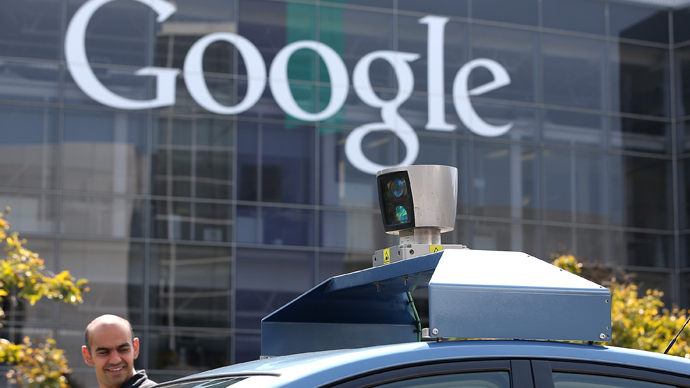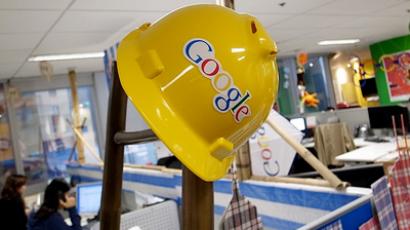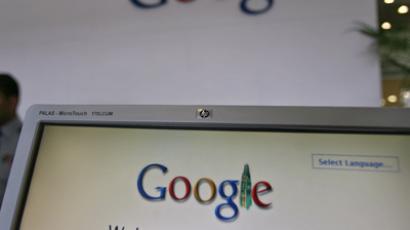Google’s driverless cars take a ride on city streets

While the flying cars from “The Jetsons” may still be a pipe dream, driverless cars are not. Google is test-driving autonomous (or self-driving) cars on the roads around its Mountain View, Calif. headquarters. And car companies are racing to follow suit.
Google’s self-driving car project began in 2009 with nearly 100,000 miles of secretive testing on California highways, according to the Wall Street Journal. The company filed for a patent for “transitioning a mixed-mode vehicle to autonomous mode” in May 2011. At that point, Google had already been testing its fleet of driver-less Toyota Prius and Audi TT models for several years, logging 160,000 miles with limited human input and more than 1,000 miles without driver involvement, BBC News reported in 2011.
Google’s current fleet of more than two dozen Lexus hybrid SUV’s meanwhile have traveled over 7000,000 miles in self-driving mode, the Associated Press reports.
Chris Urmson, the director of the Self-Driving Car Project, says in a blog post that the project, part of the company’s secretive Google X lab, has focused on the chaos of city driving over the past year. “As it turns out, what looks chaotic and random on a city street to the human eye is actually fairly predictable to a computer. As we’ve encountered thousands of different situations, we’ve built software models of what to expect, from the likely (a car stopping at a red light) to the unlikely (blowing through it).
“We still have lots of problems to solve, including teaching the car to drive more streets in Mountain View before we tackle another town, but thousands of situations on city streets that would have stumped us two years ago can now be navigated autonomously,” Urmson writes.
Four states (California, Florida, Michigan and Nevada) allow for driver-less cars, The Atlantic Cities reports. Washington, DC announced new rules at the beginning of April that would make it the first jurisdiction to license self-driving car operators (rather than testers), according to Slate. And the federal government has authorized only a handful of test locations for “connected cars,” where vehicles use technology to communicate with other similarly equipped vehicles that alert drivers to potentially dangerous situations.
“One of our goals is to drive fatality rates down to zero. Last year there were over 900 people killed on Michigan roadways. If we can get cars that refuse to crash, we can save those 900 people,” Kirk Steudle, director of the Michigan Department of Transportation, told Fox 17 in West Michigan.
A recent rider in one of Google’s limited demonstrations of highway road tests believes the self-driving cars are safer. “After a couple minutes you forget the car is driving itself. It's smooth, patient, and cautious,” the rider wrote in an e-mail to RT. “It will take time to understand how self driving cars fit into our cities, on our highways, and in our homes, but from a safety perspective I think this is a huge step in the right direction."
The rider believes Google is uniquely poised to develop an autonomous car. “Self-driving cars aren't an automotive challenge, they’re a data and computational challenge. Google is very good at predictive behavior, which is what a self driving car needs to do in order to decide if another car (or pedestrian or biker) is going to pose a ‘threat’ to it.”
The car is covered in sensors - including radar and lasers - that create 3D maps of the self-driving car’s surroundings in real time. Then Google’s software sorts that information into four categories: moving vehicles, pedestrians, cyclists and static objects like signs, curbs and parked cars. The technology has advanced far enough that it can distinguish individuals in a group on a corner, construction zones and the likely movements of cyclists, Google spokeswoman Courtney Hohne told AP.
Google says its goal is to get the technology to the public by 2017, but it has not said how it will market the technology. Options include collaborating with major carmakers or giving away the software, as the company did with its Android operating system. Google co-founder Sergey Brin told the Wall Street Journal that the company plans to partner with automakers to implement the technology, rather than manufacturing its own cars.
Mercedes-Benz, Nissan, Toyota and Audi had unveiled autonomous cars by October 2013, the Consumer Electronics Association says. At the group’s annual International Consumer Electronics Show in January, BMW and Audi both unveiled their latest driverless models, complete with demonstration drives, according to CNN. Renault-Nissan’s CEO hopes to have a model on sale by 2020, AP reports.
Driverless cars are not just about providing a safer ride, however. They may also allow people who are currently physically unable to drive to be able to run errands on their own.
“Where this would change my life is to give me the independence and the flexibility to go both the places I want to go and need to go when I need to do those things,” Steve Mahan, Google’s self-driving car user #0000000001, says in a promotional video for the company. Mahan is legally blind.














